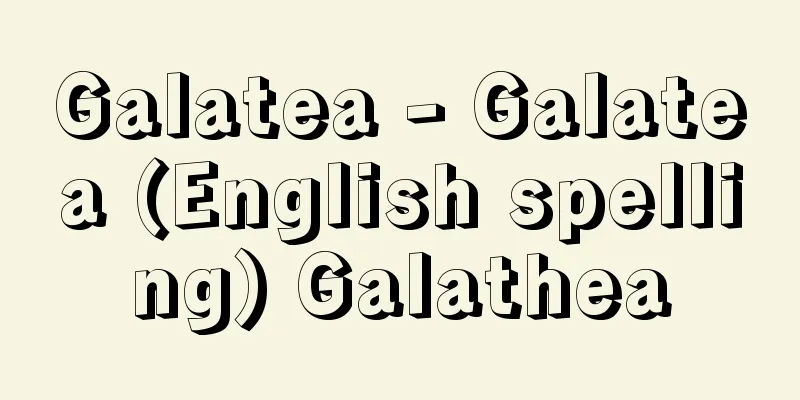Superconductivity

|
The phenomenon in which the electrical resistance of a metal or alloy suddenly becomes zero at a certain temperature (critical temperature) or below (usually below absolute temperature 20K, i.e. -253°C). Superconductivity was first discovered in mercury in 1911 by Kamarlin Onnes of Leiden University in the Netherlands. Currently, 25 metallic elements are known to be superconducting. The highest critical temperatures are technetium (Tc) at 11.1K and niobium (Nb) at 9.1K. The lowest is tungsten at 10 milliK (1 milliK is 1/1000K). Currently, no superconducting phenomenon has been found in any of the metals in group 1 of the periodic table. Since 1981, when the development of nuclear adiabatic demagnetization techniques made it possible to realize so-called ultralow temperatures below 0.1 milliK, attempts have been made to discover superconducting phenomena in gold or silver. [Taka Watanabe] Generation of high magnetic fieldsSince the 1960s, advances in material science have led to the development of superconducting materials with critical temperatures close to 20K that can generate high magnetic fields of 150,000 Gauss in coils. These include alloys of niobium-titanium (NbTi) and niobium-titanium-zirconium (NbTiZr), and intermetallic compounds such as vanadium tri-gallium (V 3 Ga), vanadium tri-tin (V 3 Sn), and gallium arsenide (GaAs). Advances in material science have made it relatively easy to generate strong magnetic fields of up to 150,000 Gauss by winding a coil of wire made of these superconducting materials and placing it in a Dewar flask (a vacuum-insulated double-walled container) and cooling it to liquid helium temperature. Conventional electromagnets using iron cores can generate magnetic fields of around 20,000 Gauss. The high magnetic fields generated by these superconducting coils are used not only in basic physics research, but also in magnetic levitation railways, superconducting generators and motors, superconducting power transmission, MHD power generation (magnetic fluid power generation), and nuclear fusion power generation. [Taka Watanabe] Discovery of persistent currentIn an experiment like that shown in , Kamarlin Onnes discovered that once an electric current is passed through a lead ring that has entered a superconducting state, the electrical resistance becomes zero and the current continues to flow permanently. If an external current is passed through a coil to generate a magnetic field, and the lead ring is placed as close as possible to the coil, and the external power supply connected to the coil is turned off in this state, the magnetic field changes from a certain strength to zero, and an induced magnetic field is generated in the lead ring in a direction that cancels out the change in the magnetic field generated in the coil, and as a result, an induced current flows in the lead ring. The induced current thus generated continues to flow forever, without dissipating as Joule heat, because the electrical resistance of the superconducting lead ring is zero. Kamarlin Onnes named this current the persistent current. [Taka Watanabe] Meissner effectIf a lead or niobium dish is submerged at the bottom of a container of liquid helium in which magnets levitate, and a light bar magnet made of ferrite or other materials is lowered from above as shown in , the bar magnet will not land on top of the dish, but will levitate in the air near it. This is because the back surface of the lead or niobium dish, which is in a superconducting state, has the property of repelling magnetic field lines. In other words, the magnetic field cannot enter the interior of a superconductor, and is pushed outward. This phenomenon was discovered (1932) by Walther Meissner (1882-1974) of Germany. It is called the Meissner effect. In 1957, Americans Bardeen, L.N. Cooper, and Schrieffer revealed that the essence of superconductivity is a macroscopic quantum phenomenon that occurs when electrons wear the clothes of phonons (acoustic quanta) and pair up, as shown in This theory of superconductivity was called the BCS theory, after the initials of the three authors, and they were awarded the Nobel Prize in Physics in 1972 for this achievement. Later, American William Martin Fairbank (1917-1989) discovered that the magnetic field generated by passing a current through a coil of a superconductor exhibits discrete values in units of h /2π ( h is Planck's constant). This phenomenon is called magnetic field quantization. The four most fundamental phenomena that characterize superconductivity are: (1) zero DC resistance, (2) Meissner effect, (3) quantization of magnetic field, and (4) Josephson effect. [Taka Watanabe] High-Temperature SuperconductivityIn 1986, oxide superconductors with higher transition temperatures were discovered than the previously mentioned low transition temperatures. Bednorz and K. A. Muller pointed out that oxides containing lanthanum, copper, and barium exhibited superconductivity at higher temperatures than had been previously observed, and received the Nobel Prize one year later in 1987. The unusually short time between the discovery and the award shows that high-temperature superconductivity is a major discovery that is expected not only by natural science but also by society. Since then, research on materials with various compositions has raised the transition temperature, but stability remains an issue. If this issue is resolved and practical application is in sight, superconductivity, which previously required the use of expensive liquid helium (temperature 4.2 K), will be realized with much cheaper liquid nitrogen (77 K). Currently, not only universities and research institutes but also industry are working on developing stable materials that can carry large currents. [Hirose Ryusei] "The Quantum World: Physics at Extremely Low Temperatures" by Nakajima Sadao (1975, University of Tokyo Press)" ▽ "Low Temperatures: The Road to Absolute Zero" by Haseda Taiichiro and Mekata Mamoru (1975, NHK Books)" ▽ "What are Superfluids and Superconductivity? Scientists Pursuing Dreams in an Unknown World" by Sasaki Shosuke (1988, Diamond Inc.)" ▽ "Superfluids and Superconductivity" by Masuda Yoshikazu (1989, Maruzen)" ▽ "From Superfluidity to Superconductivity" by Watanabe Takashi (1991, Otsuki Shoten)" ▽ "The Quest for Superconductivity" by Tsuneto Toshihiko (1995, Iwanami Shoten)" ▽ "Materials Science of High-Temperature Superconductivity: A Foundation for Applications" by Murakami Masato, supervised by Doyama Masao, Ogawa Keiichi, and Kitada Masahiro (1999, Uchida Rokakuho)" ▽ "Modern Physics Series" by Tsuneto Toshihiko "Superconductivity and Superfluidity" (2001, Iwanami Shoten)" ▽ "The Fundamentals of Superconductivity" by Niwa Masaaki (2002, Tokyo Denki University Press)" ▽ "Niigata University Graduate School of Science and Technology Booklet, edited by Niigata University Editorial Committee, Yamaguchi Mitsugu and Fukui Satoshi, "Superconductivity: Making Dreams Come True" (2004, Niigata Nippo Jigyosha)" ▽ "The Fundamentals of Superconductivity Applications" by Matsushita Teruo, Nagamura Kozo, Sumiyoshi Fumio and Enpuku Keiji (2004, Yoneda Publishing, Sangyo Tosho Publishing)" ▽ "The World of Extremely Low Temperatures - Visible Quantum Phenomena" by Watanabe Takashi (Shin Nihon Shuppansha, Shin Nihon Shinsho)" [References] | | | | | | | | | | | | | | | |©Shogakukan "> Generate a permanent current from Kamerlin Onnes... ©Shogakukan "> A magnet floating above a lead dish (Figure B) ©Shogakukan "> Formation of electron pairs (Figure C) Source: Shogakukan Encyclopedia Nipponica About Encyclopedia Nipponica Information | Legend |
|
ある温度(臨界温度)以下(多くの場合、絶対温度20Kすなわち零下253℃以下)の低温で、金属または合金の電気抵抗が突然ゼロになる現象。1911年、オランダ、ライデン大学のカマーリン・オネスが水銀の超伝導を発見したのが最初である。現在では25種類の金属元素が超伝導になることが知られている。臨界温度のいちばん高い元素は、テクネチウム(Tc)の11.1K、ニオブ(Nb)の9.1Kなどである。いちばん低いのはタングステンの10ミリK(1ミリKは1000分の1K)である。現在、元素周期表の1族にある金属からは超伝導現象はまったくみつかっていない。そこで、核断熱消磁法の発展によって0.1ミリK以下のいわゆる超低温の実現が可能になってきた1981年以降、金あるいは銀における超伝導現象を発見しようとする試みがなされている。 [渡辺 昂] 高磁場の発生1960年以降、材料科学の進歩によって、臨界温度が20K近くで、かつ15万ガウスの高磁場をコイルとして発生することのできる超伝導材料が開発されてきた。これらは、合金のニオブ‐チタン(NbTi)、ニオブ‐チタン‐ジルコニウム(NbTiZr)、金属間化合物としてバナジウム3‐ガリウム(V3Ga)、バナジウム3‐スズ(V3Sn)、ガリウム‐ヒ素(GaAs)などである。材料科学の進歩によって、これらの超伝導材料を線材として巻き上げたコイルをデュワー瓶(魔法瓶ともいう。二重壁の内部が真空の断熱容器)に入れ、液体ヘリウム温度に冷却することによって、比較的容易に15万ガウスまでの強磁場を発生させることが可能になった。鉄心を用いた従来の電磁石で発生できる磁場は、2万ガウス程度である。 これらの超伝導コイルによって発生した高磁場は、物理学の基礎研究ばかりでなく、磁気浮上式鉄道、超伝導発電機・電動機、超伝導送電、MHD発電(磁気流体発電)、核融合発電などに利用されている。 [渡辺 昂] 永久電流の発見カマーリン・オネスはのような実験で、超伝導状態になった鉛のリングに一度電流を流すと、電気抵抗がゼロになるため電流が永久に流れることを発見した。コイルに外部から電流を流して磁場を発生させ、このコイルに鉛のリングをできるだけ近づけておき、この状態でコイルにつないである外部電源のスイッチを切ると、磁場は一定の強さからゼロまで変化し、鉛のリングにはコイルに生じた磁場の変化を打ち消す方向に誘導磁場が発生し、その結果、鉛のリングには誘導電流が流れる。 このようにして発生した誘導電流は、超伝導状態にある鉛のリングの電気抵抗がゼロであるためにジュール熱となって消えることなく、永久に流れ続ける。カマーリン・オネスはこの電流を永久電流と名づけた。 [渡辺 昂] マイスナー効果磁石が浮上する液体ヘリウムの容器の底に、鉛かニオブの皿を沈めて、フェライトなどでつくった軽い棒磁石を、のように上から降下させると、棒磁石は皿の上にはのらずに皿の近くで空中に浮上する。これは、超伝導状態にある鉛またはニオブの皿の裏面が磁力線をはじき返す性質をもっているからである。すなわち、超伝導体の内部には磁場が入ることができずに外に向かって押し出されてしまう。この現象を発見した(1932)のは、ドイツのマイスナーWalther Meissner(1882―1974)である。これをマイスナー効果という。 1957年アメリカのバーディーンとL・N・クーパーとシュリーファーは、電子がのようにフォノン(音響量子)の着物を着て対をつくる結果生ずる巨視的な量子現象が、超伝導の本質であることを明らかにした。3人の頭文字をとってこの超伝導理論をBCS理論とよび、彼らはこの業績により1972年にノーベル物理学賞を授与された。その後、アメリカのフェアバンクWilliam Martin Fairbank(1917―1989)は、超伝導体のコイルに電流を流すことによって発生する磁場がh/2π(hはプランク定数)を単位としてとびとびの値を示すことを発見した。この現象を磁場の量子化という。 超伝導を特徴づけるもっとも基本的な現象として(1)直流抵抗ゼロ、(2)マイスナー効果、(3)磁場の量子化、(4)ジョセフソン効果、の四つが考えられる。 [渡辺 昂] 高温超伝導前述のような低い遷移温度をもつ超伝導材料に対して、1986年に、より高い遷移温度をもつ酸化物超伝導体が発見された。ベドノルツとK・A・ミュラーは、ランタン、銅、バリウムを含む酸化物が従来より高い温度で超伝導性を示すことを指摘し、その1年後の1987年にノーベル賞を受けた。発見から受賞までの異例の早さは、高温超伝導が自然科学はもとより、社会からも期待される大発見であることを物語っている。以後もさまざまな組成の物質による研究によって遷移温度は上がってきたが、安定性に課題を残している。これが解決し実用化のめどが立てば、それまで高価な液体ヘリウム(温度4.2K)を使わなければならなかった超伝導が、はるかに安価な液体窒素(77K)で実現できることになる。現在、大学や研究所ばかりでなく産業界においても、大電流を流すことのできる安定な材料の開発が進められている。 [広瀬立成] 『中嶋貞雄著『量子の世界――極低温の物理』(1975・東京大学出版会)』▽『長谷田泰一郎・目片守著『低温――絶対零度への道』(1975・NHKブックス)』▽『佐々木祥介著『超流動・超伝導って何だろう――未知の世界に夢を追いかける科学者たち』(1988・ダイヤモンド社)』▽『益田義賀著『超流動と超伝導』(1989・丸善)』▽『渡辺昂著『超流動から超伝導へ』(1991・大月書店)』▽『恒藤敏彦著『超伝導の探究』(1995・岩波書店)』▽『村上雅人著、堂山昌男・小川恵一・北田正弘監修『高温超伝導の材料科学――応用への礎として』(1999・内田老鶴圃)』▽『恒藤敏彦著『現代物理学叢書 超伝導・超流動』(2001・岩波書店)』▽『丹羽雅昭著『超伝導の基礎』(2002・東京電機大学出版局)』▽『新潟大学大学院自然科学研究科ブックレット新潟大学編集委員会編、山口貢・福井聡著『夢を実現する超伝導』(2004・新潟日報事業社)』▽『松下照男編著、長村光造・住吉文夫・円福敬二著『超伝導応用の基礎』(2004・米田出版、産業図書発売)』▽『渡辺昂著『極低温の世界――目に見える量子現象』(新日本出版社・新日本新書)』 [参照項目] | | | | | | | | | | | | | | | |©Shogakukan"> カマーリン・オネスの永久電流を発生させ… ©Shogakukan"> 鉛の皿の上に浮く磁石〔図B〕 ©Shogakukan"> 電子対の形成〔図C〕 出典 小学館 日本大百科全書(ニッポニカ)日本大百科全書(ニッポニカ)について 情報 | 凡例 |
Recommend
Mediastinitis
Mediastinal disease is a condition that affects t...
Coloring - Ironari
A form of tax from the late Middle Ages to the ear...
Babylonian language - Babylonian (English spelling)
The Babylonian language of southern Mesopotamia. I...
Temporary clause - Kasetsu
… In the period of strife at the end of the Easte...
Iwazaru - Iwazaru
...A monkey that lives only in Taiwan. It is also...
Open Gallery - Kairo
…A covered corridor with at least one side open d...
Tarquinius Priscus
… [Ancient Roman Calendar] The Roman calendar, wh...
Cattley, W.
...An orchid plant known as the "Queen of Or...
Hydrus (Water Snake)
Its abbreviation is Hyi. It is a small constellati...
Orphan of the Storm - Stormbringer
...The plan to remake "Fading Flowers" ...
Sumoto Plain - Sumoto Heiya
A plain in the center of Awaji Island, Hyogo Prefe...
Delphi technique
… [Intuitive method] This method makes use of hum...
Efros - Anatoliy Vasil'evich Efros
1925‐87 A leading director in the Soviet Union. Af...
Buttocks (asleep) - Buttocks (English spelling) hip
In quadrupeds, this term loosely refers to the are...
Kawasaki Group
…(1) Kawasaki (financial) Zaibatsu A Tokyo zaibat...









